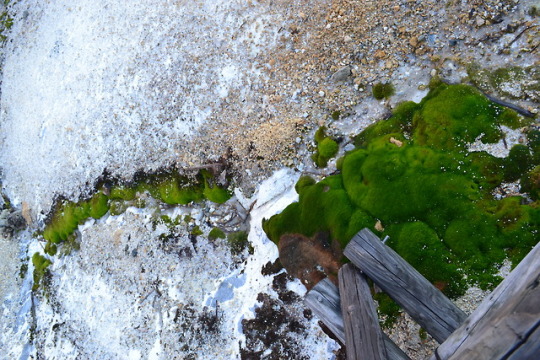#hokkaido moss
Text
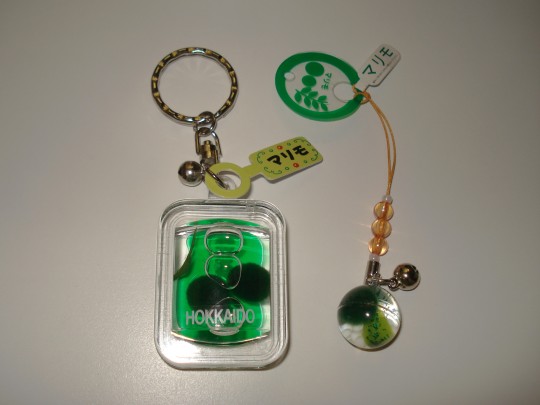
my moss ball friends :)
#( ੭ ・ᴗ・ ) ੭📸#moss#marimo moss ball#moss ball#mimos#hokkaido moss#japan#japanese#hokkaido#heisei retro#trinkets#charms#keychains#souvenir#weeaboo#weeb#otaku#neet#toys#toycore#digital camera#digicam#cute#pics#kawaii#my pics#flickr#webcore#old web#old internet
1K notes
·
View notes
Text
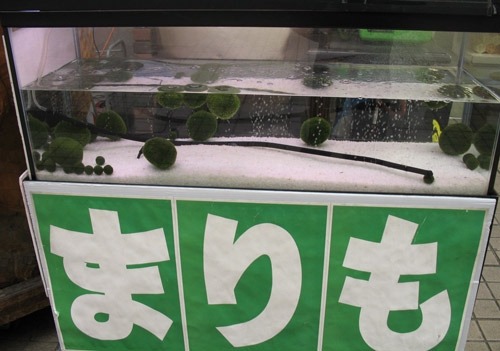
04-19-2010
20 notes
·
View notes
Photo
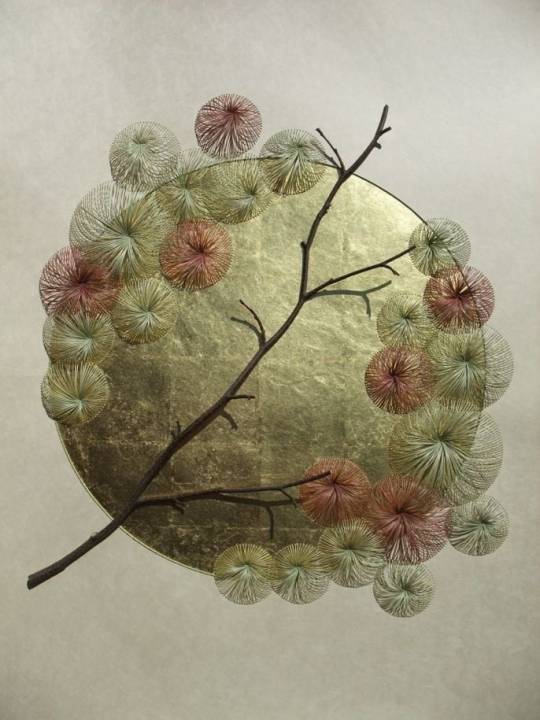
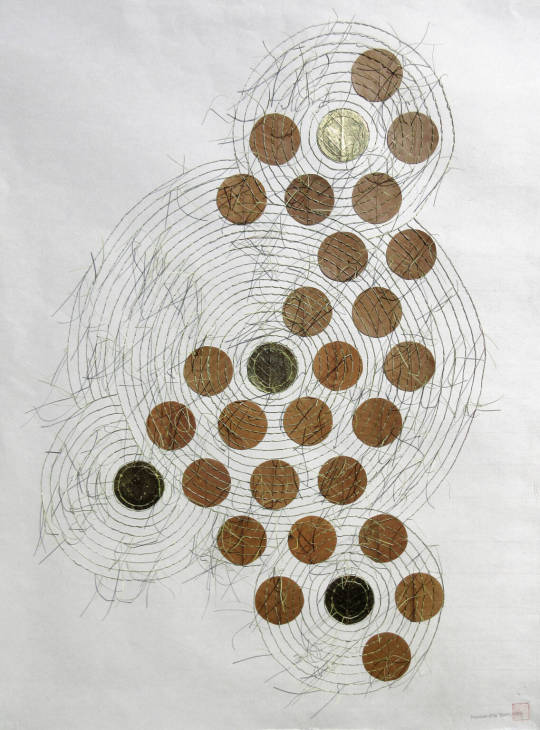


Horticulture is Kazuhito Takadoi’s first love. Having studied at Hokkaido Agricultural and Horticultural College at Sapporo, Japan and the Royal Horticultural Society at Wisley, nature is his biggest inspiration.
Takadoi began collecting leaves and mosses from gardens, which he’d use to make embroidered greeting cards. After completing a BA in Art and Garden Design at Leeds Metropolitan, he quickly realised that Art was his true calling. Heavily influenced by artists like Andy Goldworthy and David Nash, his work is defined by his use of natural materials and contemporary appeal.
His detailed sculptures and pieces always exemplify his fascination with the intricacies of nature, preserving them for his audience to enjoy.
https://www.sofst.org/kazuhito-takadoi-woven-nature/
15 notes
·
View notes
Text
USS Albacore (SS-218), a 311-foot, Gato-class submarine lost 7 November 1944 of the coast of Hokkaido Japan, she was presumed lost on 21 December 1944 and struck from the Naval Vessel Register on 30 March 1945, found 16 February 2023.
The USS Albacore earned 9 battle stars, received 4 Presidential Unit Citations and was responsible for sinking at least 10 ships.
Below is a listing of the ships compliment, their names are written in memorial at the National Memorial Cemetary of the Pacific in Honolulu, Hawaii:
IN THESE GARDENS ARE RECORDED
THE NAMES OF AMERICANS
WHO GAVE THEIR LIVES
IN THE SERVICE OF THEIR COUNTRY
AND WHOSE EARTHLY RESTING PLACE
IS KNOWN ONLY TO GOD
Walter Henry Barber, Jr., Kenneth Ripley Baumer, Henry Forbes Bigelow, Jr., Edward Brown Blackmon, William Walter Bower, Allan Rose Brannam, Herbert Hodge Burch, Nicholas John Cado, John Joseph Carano, Charles Lee Carpenter, James Louis Carpenter, Pasquale Charles Carracino, Stanley Chapman, Douglas Childress, Jr., Frederick Herbert Childs, Jr., Perry Aubrey Collom, Audrey Cecil Crayton, Eugene Cugnin, John Wilber Culbertson, Philip Hugh Davis, Ray Ellis Davis, Fred Wallace Day, Julius Delfonso, James Leroy DeWitt, James Thomas Dunlap, Carl Hillis Eskew, John Francis Fortier, Jr., Gordon Harvey Fullilove, Jr., John Wilfred Gant, John Paul Gennett, William Henry Gibson, John Frederick Gilkeson, Charles Chester Hall, James Kenneth Harrell, Robert Daniel Hill, Allen Don Hudgins, Donald Patrick Hughes, Eugene Edsel Hutchinson, Burton Paul Johnson, Sheridan Patrick Jones, George Kaplafka, Nelson Kelley, Jr., Morris Keith Kincaid, Victor Edward Kinon, Joseph Mike Krizanek, Arthur Star Kruger,Walter Emery Lang, Jr., Jack Allen Little, Kenneth Walter Manful, Patrick Kennyless McKenna, Willie Alexander McNeill, Joseph Norfleet Mercer, Leonard David Moss, Richard Joseph Naudack, Encarnacion Nevarez, Joseph Hayes Northam, Frank Robert Nystrom, Robert James O'Brien, Elmer Harold Peterson, Charles Francis Pieringer, Jr., James Teel Porter, Jerrold Winfred Reed, Jr., Francis Albert Riley, Hugh Raynor Rimmer, A. B. Roberts, James Ernest Rowe, Philip Shoenthal, George Maurice Sisk, Joe Lewis Spratt, Harold William St. Clair, Arthur Lemmie Stanton, Robert Joseph Starace, John Henry Stephenson, Maurice Crooks Strattan, Earl Richard Tanner, William George Tesser, Paul Raymond Tomich, Charles Edward Traynor, Theodore Taylor Walker, Elmer Weisenfluh, James Donald Welch, Richard Albert West, Wesley Joseph Willans, Leslie Allan Wilmott, David Robert Wood
26 notes
·
View notes
Text
Tagged!
I was tagged by @theurbanfuturesoftherecentpast to partake in the ancient tumblr ritual of answering some questions and sending them to others. Thank you so much, I used to love these things <3
Favourite colour: I don't have a specific colour or shade that's my favourite, but I love dark or muted greens the most, like moss green or olive green. I also love pretty much any shade of blue, and softer or more muted pinks.
Song stuck in my head: Probably Umbral Ultimatum, which I've felt the need to listen to a couple of times a day these past few days. In general I've been listening to the Homestuck soundtrack and then also Cha Cha Cha lmao.
Last song I listened to: ...Umbral Ultimatum since I wanted to link it and let it play lol. Before that it was Le Vieil Amant which was @theurbanfuturesoftherecentpast's answer to which song was stuck in their head.
Three favourite foods: This vegetarian lasagna that my mom makes, minestrone soup that my mom makes and maybe a buttery carrot pasta dish, that my mom also makes. These are all specific recipes that get the ingredients and amounts just right, also somehow they're always better when my mom makes them, she's really good at prepping everything and I guess food always tastes better when it's made by your mom.
Last thing I googled: Also bougasta lol, I didn't know what that was.
Dream trip: The Galapagos Islands, it's been the Galapagos Islands for as long as I can remember. I'd also love to go back to Japan, revisit Kyoto, spend more time in Tokyo, but also visit Hokkaido and some of the more southern parts. There's so much to see and do all over the country! Also shopping, there's so much I want or need that can only be found in Japanese shops and it'd be great to visit them in person.
Tagging: @cookiecthulhu, @akroglam, @gekkaritsu, anyone else who wants to do this. It's been so long I don't know who'd be interested anymore
4 notes
·
View notes
Photo

Shibazakura Park, Hokkaido by Visit MY Japan
Shibazakura, or moss phlox, are at their best in mid-May.
5 notes
·
View notes
Text
Japan's Flora
Agriculture and the introduction of exotic species have displaced most of the indigenous vegetation on the islands. The Ryukyu and Bonin archipelagoes are covered in semitropical rainforest, which contains mulberries, camphor, oaks, and ferns (including tree ferns); madder and lianas may be found with the undergrowth. This sort of plant life is only found in the Amami Islands' lowlands, but it flourishes at higher altitudes to the south.

The southern coast of Kyushu contains a few mangrove wetlands. The laurel forest zone, which includes evergreen, broad-leaved trees, runs from the southwestern islands to the northern Honshu plains. Camphor, pasanias, Japanese evergreen oaks, camellias, and hollies are common trees, with a variety of ferns as undergrowth. The evergreen zone reaches heights of more than 3,300 feet (1,000 metres) in Kyushu, although its vertical limit falls northeastward throughout Honshu. In general, camphor dominates the coastal lowlands, pasania in sunny and well-drained areas, and Japanese evergreen oak in foggy and overcast inlands. Ficus and fan palm trees grow in the southwestern Hondo area (western Honshu, Shikoku, and Kyushu). Pine trees dominate the coastal dune system.Natural stands of Japanese cedars, some with trees that are more than 2,000 years old, grow over 2,300 feet (700 metres) on Yaku Island, south of Kyushu.

Deciduous broad-leaved woods grow in the upper and more northern parts of the laurel forest zone. This type of woodland grows above 3,300 feet on Kyushu, but progressively lowers to sea level in northern Honshu. Its peak elevation is 6,000 feet (1,800 metres) in Shikoku and 5,000 feet (1,500 metres) in central Honshu. Representative trees include beeches, katsura trees, maples, oaks, and birches that rise above a bamboo thicket. All of these trees, but particularly the maples, are appreciated for their stunning autumn hues. The deciduous trees have been replaced by larches, false cypresses, false arborvitaes, Japanese cedars, Japanese red pines, Japanese black pines, and other coniferous species.
youtube
The deciduous zone extends into western Hokkaido, where beeches die on the southwestern peninsula and are replaced by basswoods and maples farther northeast. Some coniferous stands are mixed in with the zone's representative woods. Coniferous trees may be found up to 2,300 feet in elevation in Hokkaido's northern and eastern edge. Sakhalin spruces, Sakhalin firs, blue firs, and Yezo spruces thrive alongside deciduous trees including birches, oaks, and maples, as well as extensive undergrowth of mosses and lichens. Coniferous trees grow with deciduous vegetation in southern Hokkaido and in the higher elevations of central Honshu and Shikoku. Small bushes, creeping pines, and alpine plants thrive at elevations exceeding 8,000 feet (2,400 metres) in central Honshu's high mountain knots. This zone progressively declines northward to the Hakkōda Mountains in northern Honshu (4,600 feet/1,400 metres) and the Daisetsu Mountains in central Hokkaido (3,600 feet/1,100 metres). The cherry tree (sakura), known for its spring flowers and a long-standing emblem of Japan, is planted across the country. Many different types have been cultivated, and there are also wild stands in the highlands. Coniferous trees may be found up to 2,300 feet in elevation in Hokkaido's northern and eastern edge. Sakhalin spruces, Sakhalin firs, blue firs, and Yezo spruces thrive alongside deciduous trees including birches, oaks, and maples, as well as extensive undergrowth of mosses and lichens. Coniferous trees grow with deciduous vegetation in southern Hokkaido and in the higher elevations of central Honshu and Shikoku. Small bushes, creeping pines, and alpine plants thrive at elevations exceeding 8,000 feet (2,400 metres) in central Honshu's high mountain knots. This zone progressively declines northward to the Hakkōda Mountains in northern Honshu (4,600 feet/1,400 metres) and the Daisetsu Mountains in central Hokkaido (3,600 feet/1,100 metres). The cherry tree (sakura), known for its spring flowers and a long-standing emblem of Japan, is planted across the country. Many different types have been cultivated, and there are also wild stands in the highlands.
Havard referencing:
The Editors of Encyclopaedia Britannica. (1998). Japan flora. [Online]. britannica. Last Updated: 27 October 2023. Available at: https://www.britannica.com/place/Japan/Soils [Accessed 21 February 2024].
0 notes
Text

portfolio
#photography#travel photography#japan#hokkaido#kyogoku town#nature#moss#stream#river#water fall#original photographers#photographer on tumblr
48 notes
·
View notes
Photo
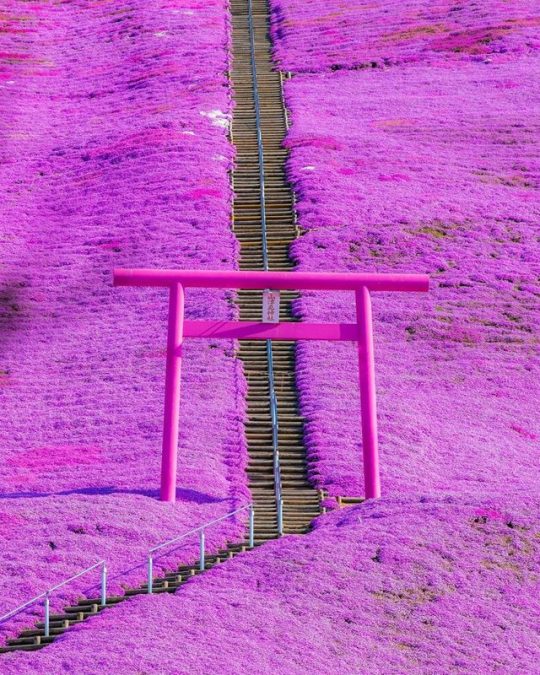
Higashimokoto Shibazakura Park (東藻琴芝桜公園) in Hokkaido, photo by usk.com_usk.com_, as showcased on tokyocameraclub.com
528 notes
·
View notes
Text
Since December 2nd is "Zosan day"...
Ok so, I don’t wanna be a typical ZoSan shipper (I am, and there’s absolutely nothing wrong with it) but…
Do you know what Marimo or Moss Balls symbolize in Japan?
Well, they are a sign of eternal love. The Marimo balls are given as a gift to partners you wish to spend the rest of your days with. And why is that? Well, I’ve been doing my research and came across the story that originated this tradition and belief;
ㅤㅤㅤThe love story of Senato and Minabe.
Senato was the younger daughter of the Ainu Tribal chief. The Ainu tribe lived centuries ago along the Japanese Island of Hokkaido, at the shores of Lake Akan so they could be watched over by the caring FIRE GOD, Fuchi.
OH! Luffy and his gear 4th...

Senato was like a princess, she had fair skin and was slim and tall (uhm… who is a prince and has fair skin? Yep…) and she was really fed up with the life she was forced to live. Always by her own, never allowed to meet others or have fun. Until one day, when she decided it was time to go fishing at the lake with some women that helped her.
The women were happily fishing for salmon, when all of a sudden deers fell into the lake splashing them and of course making the fish scare away. The deers were being hunted by some men riding horses. They had shoulder length dark hair, beards and wield strong bows. All of them were happy and laughing at the girls. Except for one of them, Minabe. He didn’t have any bear and had absolutely no glee on his face (who is usually serious? uhum…).
Senato and Minabe crossed their eyes, both of them feeling the excitement and blush… they were absolutely in love with just one sight.
Senato smiled and turned around to help her friends to pick up their fishing stuff, but before she could leave Minabe tapped her shoulder. He saw her empty basket, so he gave her a salmon.
From then on, they started seeing each other in secret, since Senato was a princess and Minabe a simple commoner in regards to her. He gave her multiple gifts, one of them a hand knife (ha!).
But the secret was too much for her and she wanted to live her love freely, as it should be. And so one day, she decided to tell the truth to her dad.
Of course, Senato was taken away and the generals forbid Minabe to get closer to her… but true love can’t wait, and so two nights after, Senato and Minabe ran away to a desolate, dark woods along the lake near Mount Meakan to live their lives happily together.
The Ainu tribe believe everything holds a kamuy. A Kamuy is a spirit or god. And decades after the young lovers ran off to that magical woods, the moss balls appeared in the lake. They believed the couple's spirits transformed into the marimo, since those moss balls are really strong and can live up to hundreds of years! So it symbolizes poetically how Senato and Minabe endured through everything to live forever together, even after their bodies perished.


So yeah, I mean, it’s really popular in Japan right? I’m sure Oda knew about this when he decided to make Sanji call “Marimo” to his -friend- Zoro. Anyway, you can think whatever you want, but I thought it was cute to tell you this story. For me there is a little bit more behind the fact Sanji calls him “marimo” besides the color of Zoro’s hair (or that’s just what I want to believe :P)
Of course, if you wanna know more you can read the full story here. 💖
137 notes
·
View notes
Photo



Horticulture is Kazuhito Takadoi’s first love. Having studied at Hokkaido Agricultural and Horticultural College at Sapporo, Japan and the Royal Horticultural Society at Wisley, nature is his biggest inspiration.
Takadoi began collecting leaves and mosses from gardens, which he’d use to make embroidered greeting cards. After completing a BA in Art and Garden Design at Leeds Metropolitan, he quickly realised that Art was his true calling. Heavily influenced by artists like Andy Goldworthy and David Nash, his work is defined by his use of natural materials and contemporary appeal. His detailed sculptures and pieces always exemplify his fascination with the intricacies of nature, preserving them for his audience to enjoy.
https://www.sofst.org/kazuhito-takadoi-woven-nature/
13 notes
·
View notes
Text
Eastern Hokkaido Day 4: Shiretoko 5 Lakes Trek
Our tour group consisted of our guide Kanako-san, myself, a girl from Osaka and a couple from Sapporo. During the walk Kanako-san pointed out some interesting features of the National Park such as claw marks on trees from bears climbing them. I didn’t know bears could climb trees, and my plan of escape was suddenly ruined! They usually climb in the fall when there are grapes growing at the tops of the trees, surprisingly the bears in Shiretoko survive on a 90% plant-based diet as they only catch fish in the salmon season. 4 of the 5 lakes have fish inside but they are small and not worth the effort to catch apparently! Kanako-san explained that Shiretoko has the highest population density of brown bears in the world with around 300 living in the National Park area. There were several points along our trek when we had to make noise, call out, or clap our hands loudly as a deterrent – mostly points where there was thick bush, or a bit of a walk uphill that we couldn’t see the top of. Along the trail we also stopped a few times to discover other quirks of the national park, a whole deer antler was passed around the group to touch, we used our binoculars to spot some ducks and birds on the lakes, and played another quiz game about a small tree. Usually when a tree is destroyed in a storm and falls over, efforts would be made to relocate it somewhere else but in Shiretoko it simply lays as it fell and is reclaimed by the forest. It eventually gets covered in moss and begins to sprout new trees from the dead one. We were asked to guess the age of a tiny sprout growing from a dead tree, I had guessed about 3 months, assuming it had emerged after the snow had ended. The correct answer was 15 years! Each year these tiny trees form a knot on their trunks so we could count together how many knots were on it and guess the age this way. At each lake we paused to take photos and have a rest from walking, by the third lake storm clouds had rolled in and the sky was getting dark – we even heard thunder in the distance which prompted Kanako-san to move us along faster fearing it would rain. Our group managed to get through all 5 lakes and arrive back to the electric fenced boardwalk (for protection from bears) at sunset. There was no rain and the sunset was spectacular both overlooking the largest lake and off into the distance of the National Park and the ocean. We treaded slowly back through the boardwalk, stopping to take magnificent photos every few metres. There were several different birds that came out to play too so we watched them singing through our binoculars and listened to Kanako-san’s stories. The trek had taken about 3 hours all up although it had not felt that long at all! I began my drive towards Asahikawa on the coastal road as the sunset continued to burn out over the water. It was a thrilling end to the day and I guess it was an impressive sunset even for the locals because everywhere I passed there were crowds of people taking photos and admiring the view – even while under state of emergency! I missed a turn off for a viewpoint I had wanted to visit in Shari but it was too late to go back so I kept driving to reach the roadside rest stop at Onneyu Onsen where I spent the night. I had a peanut butter and banana sandwich for dinner and then settled in to bed. Around 3am a bright red sunrise woke me up so I tried to take a photo (which ended up blurry as my eyes weren’t fully open!) and then went back to sleep for a few more hours. When I was ready to get up it was still early and I was one of the first to rise in the carpark full of campers. I drove about 20 minutes out of town and visited a 24 hour onsen for a shower, it was unmanned so I bought a ticket at the machine and then found my own way inside. I had it all to myself! It was great to have a proper shower and a soak although the Google reviews were very correct that the water felt ‘slimy’. It was clean water, the minerals just gave it a strange texture... My drive home took me through Taisetsu Gorge which I had much higher expectations for, I’m glad it was on the way because if I had made the special trip as I had intended last year I may have been a little disappointed as it paled in comparison to the lakes of Eastern Hokkaido! On the main highway back there had been an accident so I was forced to turn around and take a different route to get through which unfortunately added about an hour or so to my driving time. I stopped for one last McDonald’s in Chitose and then hit the final two hours back home where I fell exhausted into bed for an early night!
2 notes
·
View notes
Text
AKANKO ( AKAN lake) famous for its MARIMO ( round moss-ball)
AKANKO ( AKAN lake) famous for its MARIMO ( round moss-ball)
‘AKANKO( AKAN lake) famous for its MARIMO(round moss-ball)’AKANKO(AKAN lake) is the beautiful lake famous for its MARIMO(mysterious round moss-ball) in east Hokkaido.
It’s a caldera lake formed by volcano eruption 10000years ago.
The average yearly temperature is 3.7℃, very cool .There are many MARIMO( round moss-ball) in the bottom of the lake , the sizes are 15-30cm diameter.
You can see…

View On WordPress
1 note
·
View note
Photo

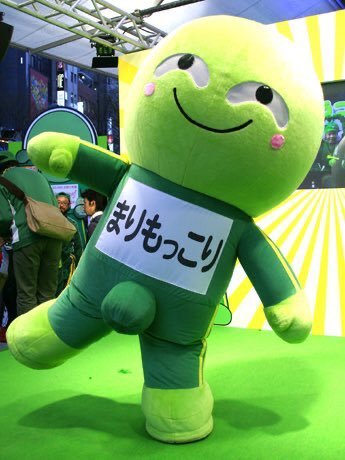
mondo mascots | Marimokkori is a moss-ball-headed mascot from Hokkaido, Japan, with a troubling bulge in his pants.
30 notes
·
View notes
